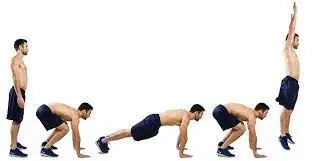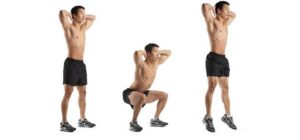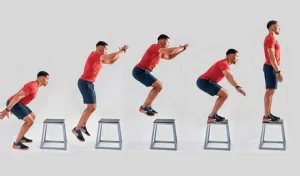Best Strategies For Running Faster Mile
Running a faster mile requires a combination of physical conditioning, mental focus, and strategic planning. In this guide, we will explore some of the best strategies to help you improve your mile time and reach your running goals. From effective training techniques to race-day tactics, we’ll cover it all to help you run your fastest mile ever.
Table of Contents
Tips for Running the Mile
Warmup Properly
- The Mile Goes Quickly: faster than many of the other competitions you’ve participated in. A 5k or a half marathon pale in comparison to a mile. For those who haven’t run a mile in a while, the mile can be a shock. The right kind of warming up is crucial. That covers both the activation routines and our customary dynamic warmup. There are three main advantages to using the ladder for these activation activities.
- Rapidity And Coordination: Ladder drills provide a variety of diverse footwork and patterns of motion, which can assist in improving stride length, speed, and agility on the running track. Include ladder drills in your training regimen to reap these benefits.
- Cardio Workout: The agility ladder can provide you with a great cardio workout if used correctly and quickly. Just remember that good form should always come first, no matter how hard you push yourself. You are simply wasting your time if you start to lose form.
- Strengthens The Brain And Body: While enhancing focus and coordination, ladder workouts will also help you strengthen your joints, tendons, and ligaments. Agility exercise can enhance cognitive performance, including alertness and memory, according to studies.
The Cooldown
- The mile, as I previously stated, is a shock to the system, so we must ensure that we look after ourselves after the run. Make sure to finish with a brief jog and perhaps some static stretching or foam rolling. Following that, rehydrating will prevent cramping. Simply give yourself a small pat on the back after that.
How to Run Faster?
You must work more quickly if you want to sprint more quickly! That might include running more quickly, but there are alternative ways to simulate the demands of speed work, such as explosive strength movements. You’ll be able to accelerate your pace if you establish some solid routines outside of the gym. Today, you’ll experience some of those.
With 3 exercises to help you get quicker and 8 advice (plus a few additional ideas), we have 11 techniques planned to help you put on the speed. This training includes cross-training, methods for running quicker, speed exercises, recovery, and more in addition to tempo runs and longer runs.
The exercises can be completed anywhere in a short amount of time because no special equipment is needed. When it comes to your training, the running tips to run quicker take a holistic approach, assisting you in being mindful of the larger picture even when you’re not exercising.
8 Running Techniques to Speed Up
It is intended to train to run more quickly. With a casual workout program, few athletes will ratchet up the pace at least not at a rate they can sustain.
Your training, exercises, and running technique all affect how quickly you can run. You’ll begin to run more quickly over longer distances if you concentrate on these factors.
Lose Weight
- It’s difficult to include this on the list. Runners are known to come in a wide range of sizes and shapes. There is no disputing, however, that moving weight is easier when there is less of it to move. Possibly you set your goal to lose just a few pounds, or maybe you want to lose five to ten. Your running pace will be impacted by the quantity you select.
- The most widely used adage is that you might increase your speed by 1% for each pound that you drop. Which, to be honest, doesn’t sound like much. However, substituting a few snacks for more fruits and vegetables can be worthwhile if you’re aiming for personal records or simply want to test your body’s limits.
Focus on Core Strength
- You might not consider your core as a viable improvement area if you’re trying to run quicker. Your feet will ultimately transport you fast from point A to point B. However, taking a closer look at your core can help you give your speed training a little more power.
- Your core muscles are in charge of keeping your spine steady while you move. They not only assist you in staying upright while running, but they also lessen excessive rotation. Typically, you’d be twisted side to side by the contralateral movement—one arm forward and the other leg backward. Your core fills in the spaces left by your upper body and legs as they move, which helps to reduce that rotation. Instead of losing energy in the cycle, it keeps you steady and going ahead.
- Additionally, a strong core can ease hip pain and stop weariness. Your deep core muscles should collaborate with your glutes, hamstrings, and hip flexors to move your leg forward and out in each step. Your running economy will improve and you’ll be able to go more quickly if you can move your feet as efficiently as possible.
Optimize Your Breathing
- You probably already know how rapidly your breath and pulse rate may increase to an uncomfortable level if you’ve ever done any speedwork. Even better, you’ll have a chance to practice that uneasy sensation throughout the activities that follow in this essay.
- Before you arrive on the road or into the workout, practice your breathing to make the transition easier. You’ll breathe more air into your body with each breath if you can learn not to do shallow chest breathing and rather fill your lungs with belly breathing. More air means that your muscles will receive more oxygen.
Clean Up Your Diet
- Examine your eating patterns honestly. Do you drink water regularly throughout the day, or only before you leave for work? Do you often consume dark, lush green vegetables or does your daily vegetable dish only consist of pale iceberg lettuce? While kale won’t make you quicker on its own, it will provide you with a substantial amount of vitamins, minerals, and antioxidants. As you increase your fiber consumption, all of these things will help you feel better, heal more quickly, and perhaps shed a little weight.
- Undoubtedly, what you eat while on the go matters. But keep in mind that when you’re not jogging, you spend a lot more time eating, giving you a lot more chances to make significant changes. You will feel your best for your upcoming workout or race day if you consume plenty of whole-grain carbohydrates, lots of fruits and vegetables, and little junk food.
Using Pre-Run Drills and Strides, Ace Your Technique
- Running quickly demands a full-body effort. As your body ages, your form deteriorates, decreasing the effectiveness of your stride and slowing you down. You may run faster and avoid injury if you concentrate on utilizing the perfect form.
- Your head to your toes should be in proper running form. For an effective stride, your body should be in alignment and your posture should be upright. Together, your hips and shoulders should support your relaxation and help the rest of your body move into position.
- Your legs’ capacity to generate force from the glutes and hamstrings and enable a driving arm swing is increased when your core is engaged, your hips are moved forward, and your shoulders are tall.
- Running faster will be simpler and less likely to result in injuries once your body is in alignment and energized. Use these stride-out exercises or warm-up activities to improve your running form.
Prioritize Recovery and Maintenance
- Your body wants to be loose to run as quickly as possible. Every day stretching and foam rolling will help you avoid injuries and pain.
- To improve the length of your stride, concentrate on opening up your hips. Opening out the hips increases your ability to reach top speed since stride length and stride rate are the two factors that determine speed.
- As always, getting enough sleep, drinking enough water, and eating well all contribute to a body that is happy, healthy, and ready to increase its running speed.
Improve Your Speed by Updating Your Mindset
- Running at difficult speeds requires a lot of mental fortitude. It is simple to let pessimistic thoughts seep in when your legs feel heavy and the pace is difficult. It’s tempting to doubt your abilities and desire to slow down, yet you frequently have more energy than you realize and can go faster than you imagine.
- You need to develop mental strength just as much as physical strength if you want to run faster. Training exercises and long runs might help you develop mental toughness. Take advantage of the chance to train your mind to run faster during these runs of increasing intensity.
3 Workouts To Make You Faster
- We’ll go over routines and activities that will make you run faster in the sections below. These exercises show you how to run quickly and safely. Even while strength training and exercises aren’t always the most enjoyable parts of running, training to run faster will pay off if you’re out on the roads or trails.
Practice Intensity With A Plyometric Workout
- Strength training is one method we like to employ to increase intensity when we aren’t running. It’s like learning how to breathe under pressure and work harder while staying safe in your living room. Or wherever you decide to practice this exercise, like a park.
- Burpees and squat jumps are two exercises you’ll do with your body weight. Since the workout only lasts four minutes, there isn’t much time to practice working hard. Don’t compromise your running form for speed or density because the objective is to challenge yourself without getting hurt.
You can develop the skills to run faster if you concentrate on maintaining appropriate form.

- Start by standing tall, with your toes pointing forward, and your feet hip-width apart.
- To put your hands on the ground in front of your feet, swing your hips back.
- Now return to a straight arm plank by either stepping back or jumping forward.
- Do a “controlled crash” to the ground from here with your chest and hips flat on the surface.
- Now raise your chest while keeping your knees on the floor.
- Once the chest is elevated, reverse the arch by snapping the hips, then bring the feet back to your hands, right below your hips.
- Then get up.
- Hop while raising your arms in the air.
- One burpee, then.
- The Squat Jump

- We can now perform squat jumps to energize the glutes and hamstrings. The squat jump looks like this:
- With your feet a little more than hip-width apart, take a tall stance.
- Sit your hips back and bend your knees just a little while keeping your toes pointed straight forward.
- Ensure that your knees are lateralized, that is, that they do not cave in.
- Raise your arms in front of you as you squat down.
- Squeeze your butt and push it down towards your heels after your hips are as level as they can be.
- You will throw your arms back beyond you from the depth of your squat.
- Straighten your legs and drive your hips fully forward at the same time.
- Your elevation into a modest hop will be assisted by the momentum from the arms.
- Your next posture will be a squat with your arms back in front as soon as you land the jump.
- One squat jump, then.
Train Your Hips To Increase Power Output
- Our hips act as the running’s gas pedal. The more we employ them, the more power (and velocity) we can produce. Along with keeping your hips stable, your hips also aid in firing your glutes, which assist you in going forward. Your spine will be in a strong and secure position with a stable pelvis, preventing the usual low back pain that runners experience. Speed training and injury prevention combined!
- The Box Jump

- A squat jump up to a higher platform is essentially what the box jump is. This is how it appears:
- Stand tall at first.
- Afterward, sink into the squat like you would during squat jumps, with the exception that your arms will swing behind you.
- You’ll start to exit the bottom in the same manner, with the exception that your arms will now extend forward.
- You’ll tighten your core and tuck your knees into your chest as you prepare to jump with your feet about to leave the ground.
- Your feet will flex and your legs will splay out in front of you.
- Your leverage for climbing to a higher surface is this.
- Try to immediately descend into the bottom position of the squat as you touch down.
- Get up off your heels at this point, pinch your butt, and stand tall.
- One foot at a time safely descends to the floor.
- One box jump, then.
You can add this exercise into your training:
- Carry out 5 to 10 box leaps.
- Run 200 to 400 metres now. It could be around the track once, down the street, or another equivalent distance.
- Perform a further 5–10 box leaps.
- Run 200–400 metres once more.
- Repeat- 3 to 5 times.
- This exercise is fantastic for developing hip strength and using it to improve your running. Consider including it once each week in your training regimen!
Run Faster To Get Faster
- The last of our speed-up jogging drills! The term “speed play” (fartlek) was created in Sweden, where it is derived. You can practice using different ‘running gears’ by incorporating speed work and interval training into your runs. You’ll become more adept at breaking through performance plateaus if you don’t constantly run at the same pace, especially over longer distances.
The Fartlek running technique is quite effective. On the following run, give this a shot:
- You’ll choose which parts of your run to “push it” through. You set the guidelines.
- Choose a feature that will appear repeatedly on your path, such as stairs, a telephone pole, or a hill.
- You have to run faster for the duration of each obstacle every time you reach the one you choose. While not a full-out sprint, it should still be between 70 and 80 percent of your maximum speed.
- You must shift into the next gear and maintain it until you reach the top of the hill if you choose hills. With this approach, you can train for both speed and hills in one shot!
- Once you reach the next hill or obstacle, you can resume moving more slowly.
- Between each loop, perform five to ten lunges to provide some muscle training.
- By introducing pieces at a quicker rate at random, you can accomplish this on the treadmill. For instance, try to accelerate during commercial breaks and then slow down until the subsequent one.
How to Run Faster & Longer Without Tired?
- Longer distance speed maintenance is a skill endurance runners must develop. While you’ll probably always feel exhausted after a quick, prolonged run, you can educate your heart and muscles to adapt to the weariness better.
- It’s not necessary to change your training regimen to learn how to run longer and faster without getting exhausted. Continue to work on your strides and tempo run, and then give your Z1 and Z2 easy runs full of energy.
- You can develop the aerobic foundation necessary to run faster and longer without feeling exhausted by doing this regularly over weeks, months, and years.
- Consistency is key; there is no magic cure or unique exercise. What is difficult today becomes simple (or simpler) tomorrow. Continue your workouts, put rehabilitation first, and stay injury-free. These are the tried-and-true methods for increasing your speed and endurance.
How Strides Can Help You Run Faster
What Are Strides?
- Strides are sprints of 20 to 35 seconds, or 85 to 95% of your mile race speed. They are typically given a running program to follow after a short recovery run or before a significant training or race.
- To start the blood circulating to your legs and raise your pulse rate throughout the warm-up process, you can also use strides.
How To Do Strides
- Step 1: Finish your scheduled run at a leisurely pace on time. You finish your strides after your run, not before.
- Step 2: After your run, stretch briskly for three to five minutes. Pay attention to anything that bothered you or was tight while you ran.
- Step 3: Over the first five seconds of your stride, ease into a brisk speed. To avoid damage, it’s crucial to relax at the speed and avoid bursting out of the gait.
- Step 4: Your speed should have reached its maximum after 5 seconds. Start concentrating on remaining calm and allowing your body to do the work. Keep your face relaxed, watch out for flailing arms, and practice landing on your midfoot rather than your heel. Continue to go smoothly at your full pace for the next five seconds, then slowly drop down to a stop.
- Step 5: Complete a two-minute recovery period between each stride. You can walk, jog slowly, or stop to collect your breath while stationary. Strides are not meant to be a strenuous workout or to make you breathe heavily. Since strides are made to improve speed and mechanics, beginning your next one when you’re still exhausted or before you’ve fully recovered can hinder your ability to make training adjustments.
What Are The Benefits Of Strides?
- Strides have a lot of advantages, and I employ them in a variety of ways based on what I want to achieve with each runner.
- Strides enable you to improve your mechanics incrementally. When you run for only 20 to 30 seconds and aren’t excessively exhausted, it’s simple to concentrate on form. It not only aids in the creation of mental cues for maintaining alertness and relaxation, but it also makes the procedure more natural for the body during the race.
- To develop our aerobic systems or train our threshold, distance runners typically run at slower rates. You may incorporate speed work into your training program with the help of strides without having to miss a whole training day. Your legs will get some “get down speed” with just a few strides a few days a week.
- Strides are an excellent building block for faster, more demanding training. Before they begin any training, I assign strides to many of my beginning runners. Strides are a gradual introduction for the body and help you get used to the sensation of running faster because they may not be used to going fast or doing speed exercises.
- Finally, after a light workout, strides can be a terrific method to stretch out the legs. The miles and tempo runs can frequently make the legs sluggish, especially when preparing for a marathon. Strides can provide some variety to your workout and your legs by breaking up the monotony. Usually, a few stride workouts are sufficient to restore the vigor to your legs after a marathon.
Summary
The best strategies for fast running involve a combination of physical conditioning, proper technique, and mental focus. Firstly, it’s crucial to establish a well-rounded training regimen that includes regular strength and endurance exercises to build overall fitness. Incorporate sprint drills to improve speed and agility. Focus on flexibility and mobility exercises to prevent injuries.
Pay attention to nutrition, ensuring you fuel your body with the right nutrients for energy and recovery. In terms of technique, work on your running form, maintaining a tall posture, and using your arms efficiently for balance and propulsion. Mental preparation is equally vital; stay focused, maintain a positive mindset, and use visualization techniques to envision successful runs. Consistency in training and gradual progression in intensity will lead to significant improvements in your running speed over time.
FAQs:
What is a good pace for a fast mile?
Your pace will depend on your current fitness level, but aiming for a pace of around 6-8 minutes per mile is a good goal for many runners.
What should I eat before a mile race?
Eat a quick, light meal about two to three hours before the race. Focus on carbohydrates for energy.
Stay hydrated but avoid excessive fluid intake right before the race to prevent stomach discomfort.
What can I do to recover after a fast-mile race?
Cool down with light jogging and stretching. Rehydrate and refuel with a balanced post-race meal or snack. Rest and allow your body to recover before resuming intense training.
How often should I attempt to run a mile at maximum effort?
Save all-out efforts for race day or specific time trials. Running all-out frequently can lead to burnout or injury.
References:
Bischoff, B. (2018, April 30). Tips for Running the Mile — Rhode Runner Inc. Rhode Runner Inc. https://www.rhoderunner.com/news/2017/4/28/tips-for-running-the-mile
Martin, H. (2023, August 17). How to Run Faster: 15+ Ways to Pick Up Your Speed | The Run Experience. The Run Experience. https://therunexperience.com/3-running-exercises-to-get-faster
Jeff, C., & Jeff, C. (2015, May 5). How Strides Can Help You Run Faster – Runners Connect. Runners Connect -. https://runnersconnect.net/strides-how-strides-can-help-you-run-faster/




